Timing belt versus timing chain
Timing belt versus timing chain
What does a timing belt do? What does a timing chain do?
Every internal combustion engine contains a crankshaft and at least one camshaft. Both the crankshaft and camshaft must rotate in precise synchronization with each other to avoid the pistons hitting an open valve. There are three ways to do that: gear, chain, or a belt.
All three methods accomplish the same goal, rotate the crankshaft and camshaft in synchronization with each other. There are advantages and disadvantages to each method.
Timing gears
In older engine designs 4, 6, and 8 cylinder 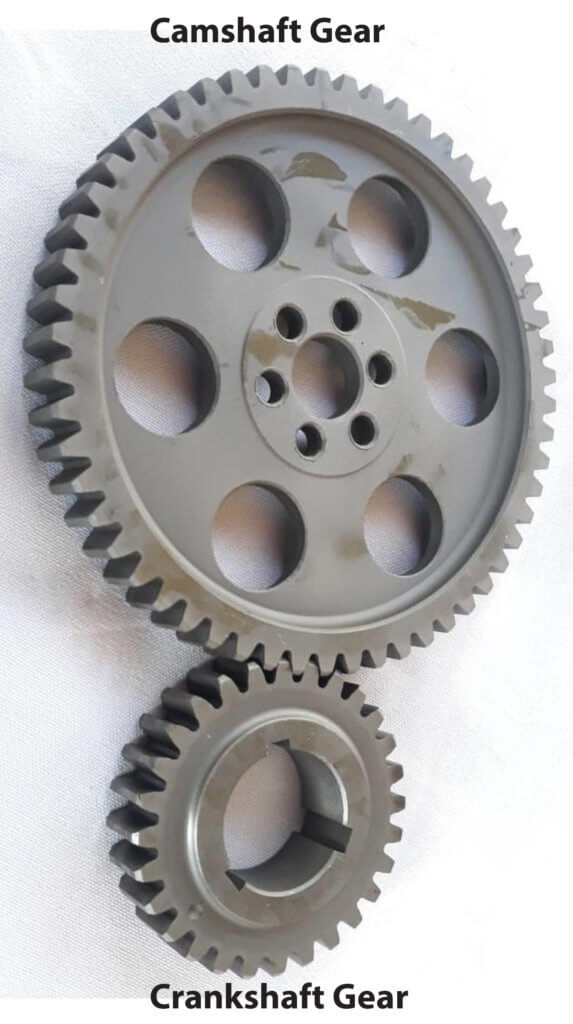 engines carmakers often chose to use gears; one gear on the crankshaft that meshed with a gear on the camshaft. The gears are lubricated with engine oil and covered by a timing cover and gasket. In an effort to reduce noise and wear, many carmakers switched away from timing gears to a single timing chain.
engines carmakers often chose to use gears; one gear on the crankshaft that meshed with a gear on the camshaft. The gears are lubricated with engine oil and covered by a timing cover and gasket. In an effort to reduce noise and wear, many carmakers switched away from timing gears to a single timing chain.
However, some performance engines still use timing gears and in some cases they use a series of gears to transfer rotation from the crankshaft, through intermediate gears and then on to the camshafts.
Timing gear advantages: more precise synchronization
Timing gear disadvantages: High cost, weight
Carmakers move to timing chains
Timing chains weigh less that the large timing 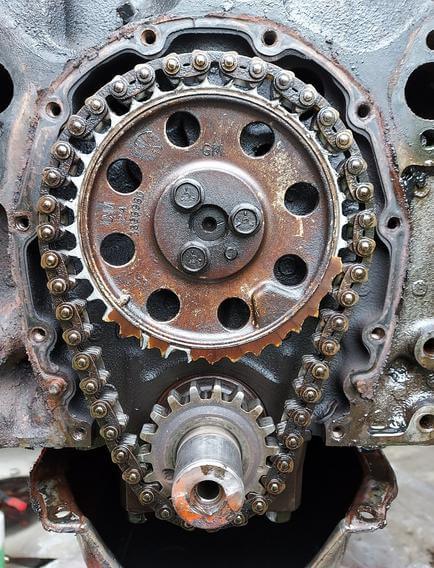 gears and cost less to produce. They still require lubrication, so they are covered so the oil splash drains back into the sump.
gears and cost less to produce. They still require lubrication, so they are covered so the oil splash drains back into the sump.
Timing chain disadvantages: Timing chains stretch as they wear and that creates some slop in the synchronization
The shift to overhead camshafts causes a change to timing belts
When engine designers moved the camshafts to sit on top of the valves, the distance between the crankshaft and camshaft seemed to great to be handled by a belt. The engineers were worried about chain noise and chain slap. So they switch to a heavy duty cogged belt.
The belts worn fine, make less noise than either gears or chains, and don’t need lubrication. But they wear and must be replaced at regular intervals.
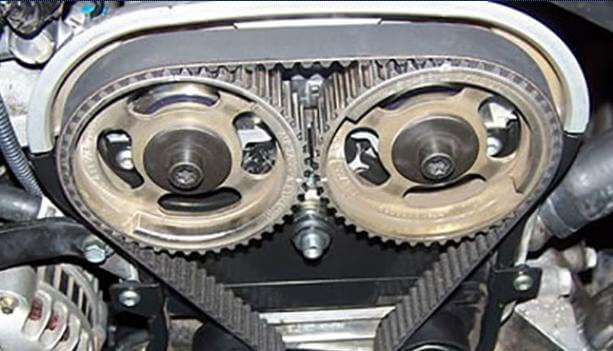
Consumers complain about the high cost of belt changes
In some engines, a timing belt replacement can cost almost $1,000 because the procedure requires major disassembly.
Carmakers switch back to timing chains
The high maintenance of timing belt changes over the life of the vehicle became a problem for carmakers, so they switch back to lubricated chains.
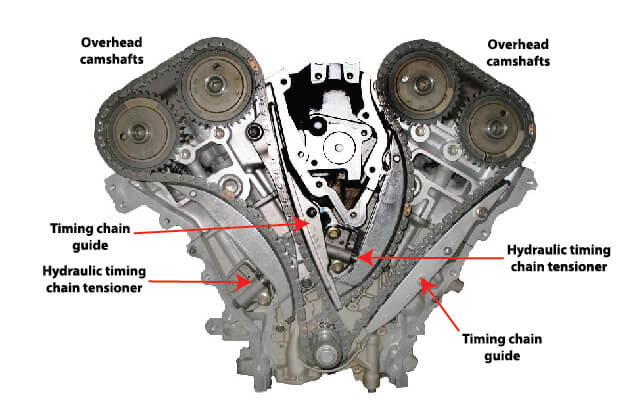
Notice the two timing chains, two hydraulic tensioners and chain guides
Timing belt versus timing chain considerations
It’s true that routine timing belt changes are expensive. But the long timing chains required for overhead cam engines present other problems. Their life can be reduced by using the wrong oil or not following the carmakers recommended oil change intervals. Using the wrong oil or going too long between oil changes causes the chain to stretch and slap against the chain guides, causing noise and rough idle.
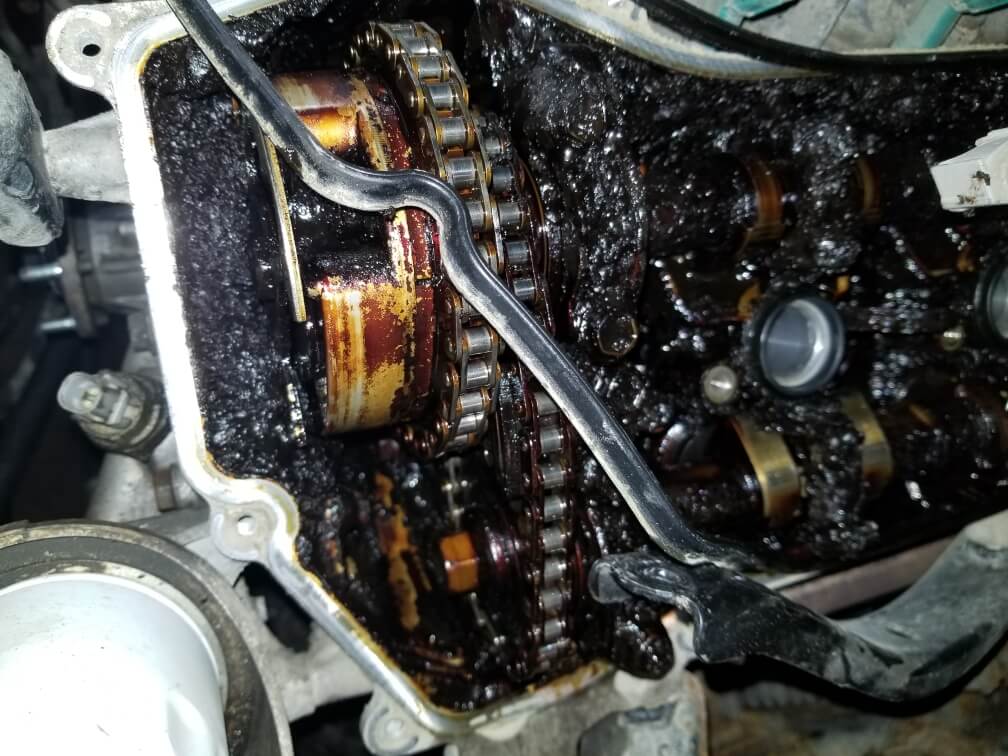
Sludged engine causes timing chain stretch
Posted on by Rick Muscoplat
